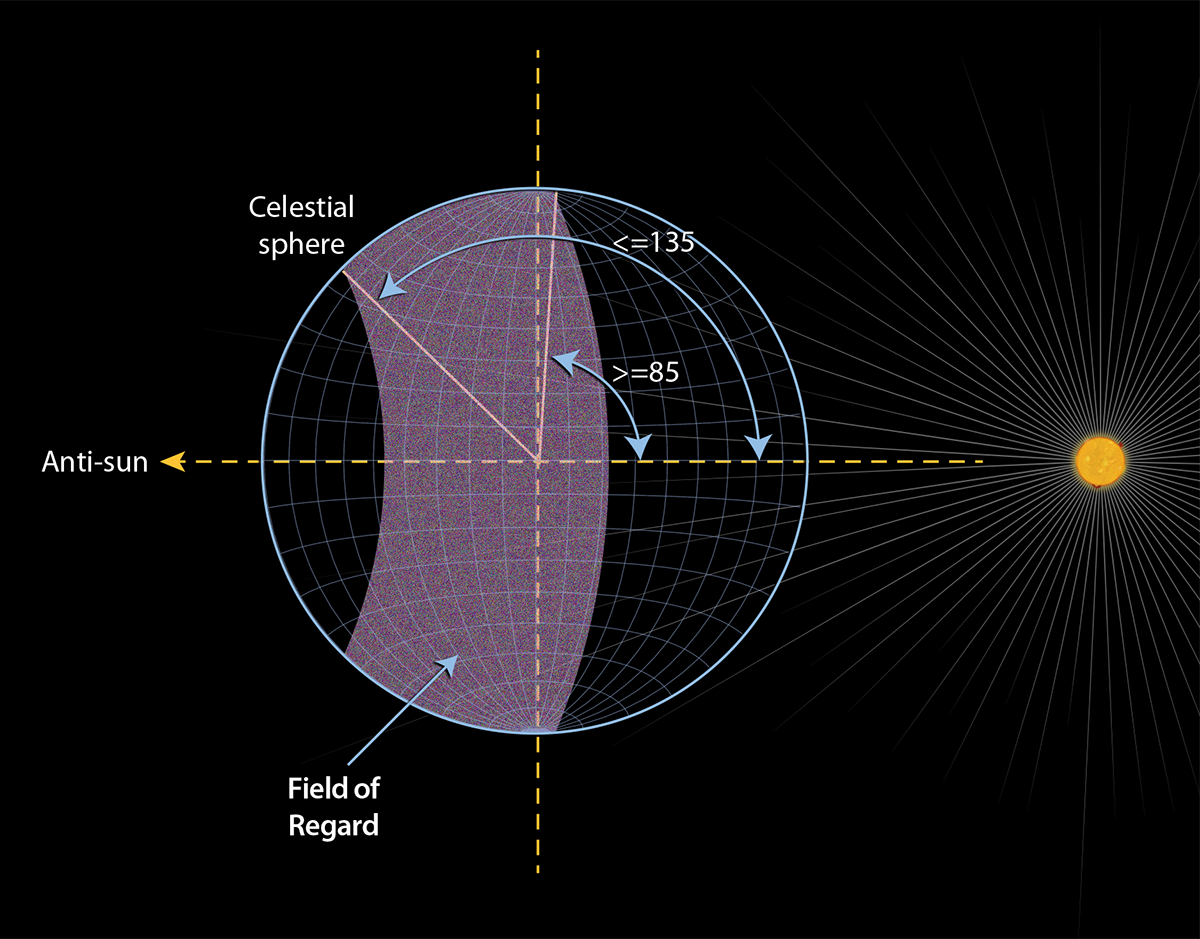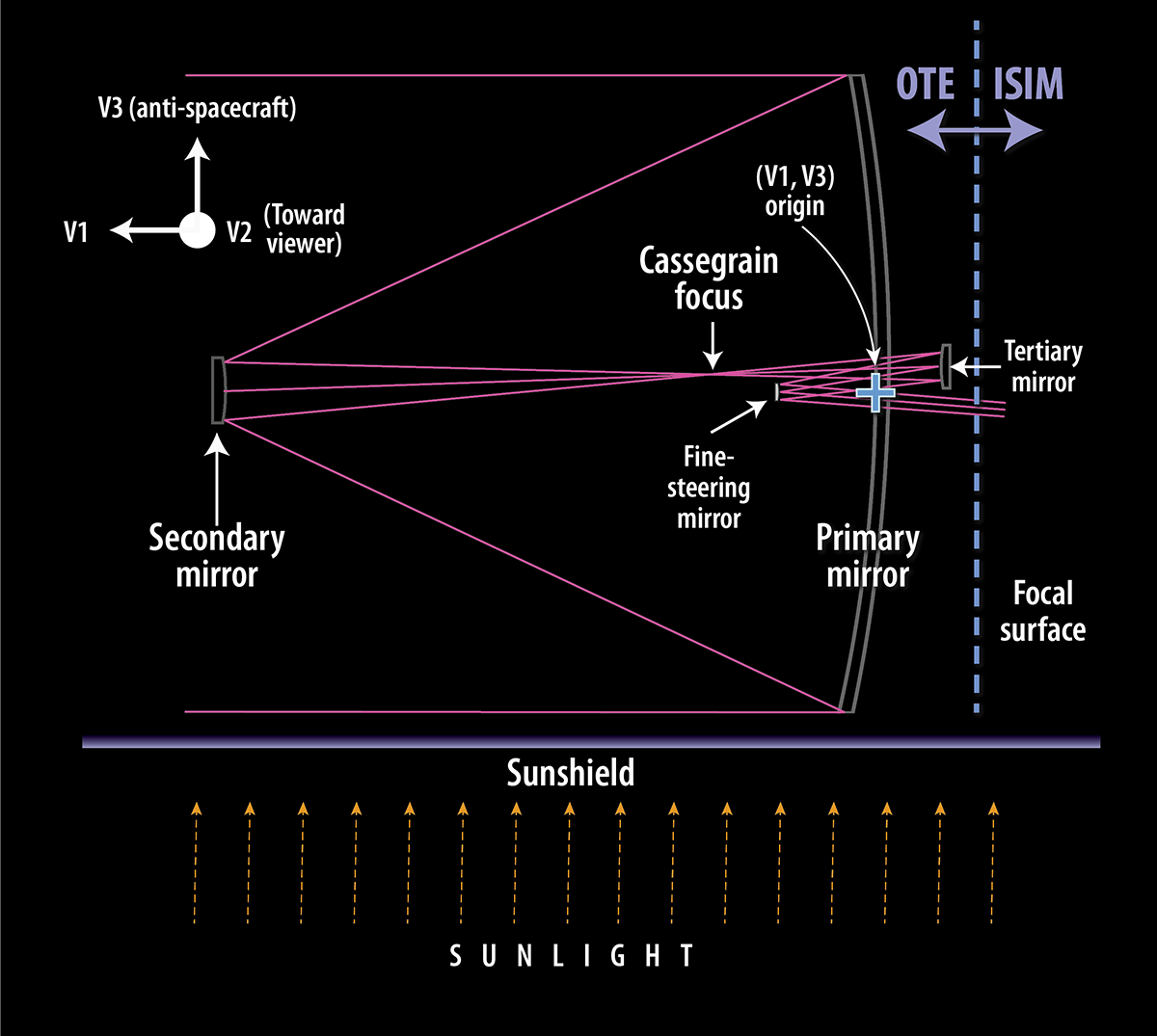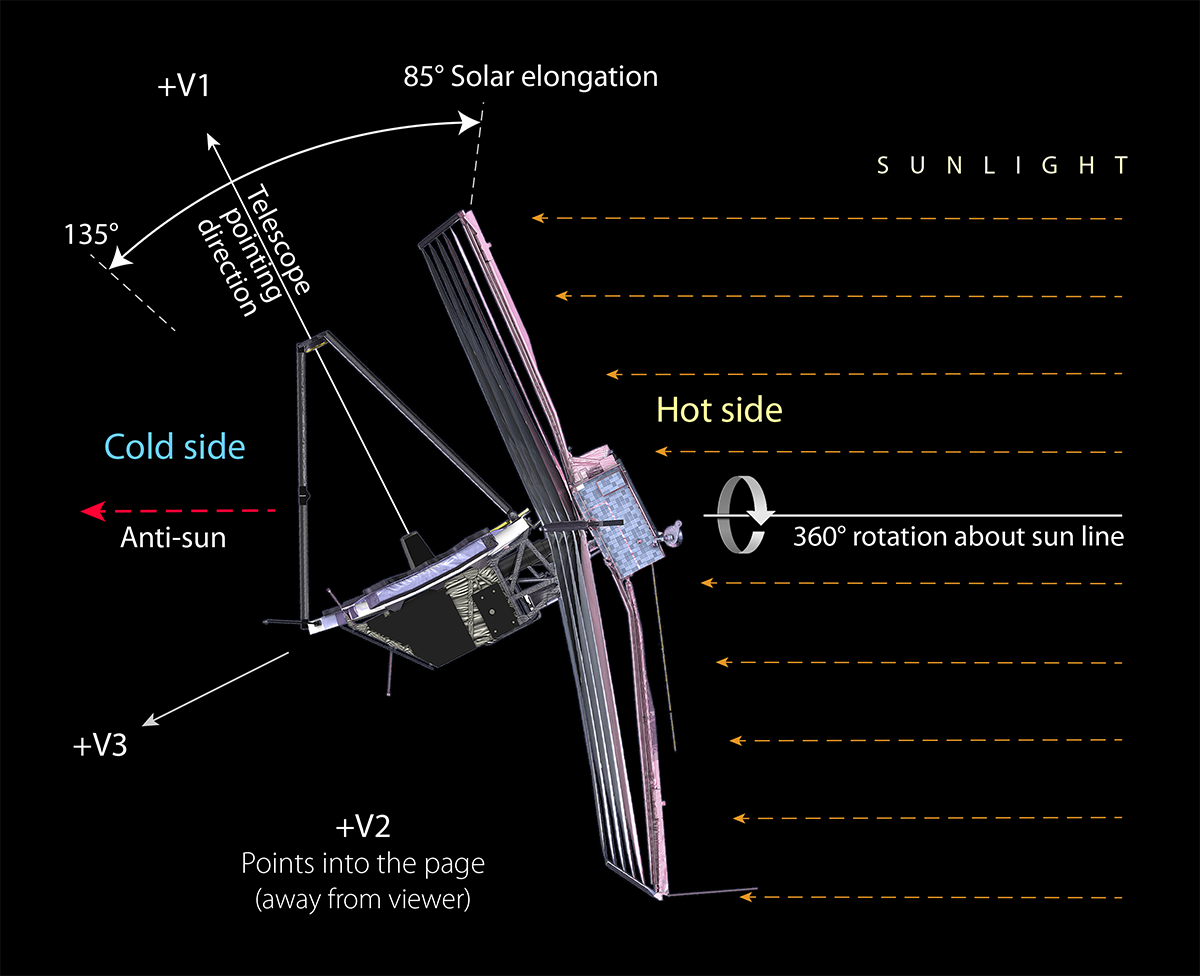JWST Observatory Coordinate System and Field of Regard
The JWST Observatory, as a whole, has a reference coordinate system used by operations to define the pointing of the telescope within the field of regard (FOR), including defining the continuous viewing zone (CVZ) available to the observatory.
On this page
See also: Target Viewing Constraints, JWST Position Angles, Ranges, and Offsets
The JWST Observatory V1, V2, V3 coordinate system is primarily used in operations, but there are a number of instances where users may want to understand the orientation of the focal plane or one of the science instruments in the context of the observatory's pointing. Also, there are a number of places, for example, in various APT diagnostic plots, where the V axes are used to provide an instrument-independent reference frame.
This article provides information to link the V axes definitions to other JWST software and systems. Furthermore, the JWST field of regard (FOR) defines the instantaneous region of the sky that is available for safe JWST pointing of the telescope boresight (the V1 axis).
JWST field of regard (FOR)
STScI Office of Public Outreach video on JWST Field of Regard
The JWST field of regard (FOR) is the region of the sky where scientific observations can be conducted safely at a given time. The FOR is defined by the allowed range of boresight pointing angles for the observatory relative to the sun line, which must remain in the range 85° to 135° at all times to keep the telescope behind the sun shield. Thus, the FOR is a large torus on the sky that moves roughly 1° per day in ecliptic longitude, following the telescope in its path around the sun. Over time, this annulus sweeps over the entire celestial sphere. As a result of the FOR, JWST can observe about 39% of the full sky on any given day and can access 100% of the sky over 6 months. Figure 1 shows a schematic of the FOR.
Beginning in late 2022, NASA has imposed a micrometeoroid avoidance zone to minimize potential impacts from space debris coming from the direction of orbital motion. This zone overlaps a significant portion of the orbital leading side of the FOR torus. Observations in this overlap region with the FOR are not disallowed, but must be minimized for the long term safety of the observatory. Starting with Cycle 2, APT contains warnings and errors related to proposed observations that require observations in this restricted region.
JWST Observatory coordinate system
The observatory V axes are defined with respect to the telescope, as shown in Figure 2. +V1 is the boresight of the telescope, +V3 points away from the sun shield, and +V2 is orthogonal to both of these, forming the "thumb" of a right-handed coordinate system. In the context of Figure 2, the V2 axis is pointing towards the reader (out of the screen). The +V3 axis projection onto the sky, referenced eastward from north, is used within the APT diagnostics (for example in the Visit Planner) as an instrument-independent reference frame.
Continuous viewing zone (CVZ)
Because JWST operates in an ecliptic coordinate framework, there are 2 small continuous viewing zones (CVZs) centered at each of the ecliptic poles (see Figure 6). The 85° solar exclusion zone then determines the radius of the allowed CVZs to be essentially 5°, although any observation approaching the 85° limit will have additional limitations due to safety considerations.
In standard J2000 equatorial coordinates, the CVZs are centered at the following coordinates:
N-CVZ: 18h00m00.00000s +66°33'38.5520" (or 270.00000000° +66.56070889°)
S-CVZ: 6h00m00.00000s −66°33'38.5520" (or 90.00000000° −66.56070889°)
The S-CVZ encompasses a portion of the Large Magellanic Cloud.
References
Schlegel, D. J., Finkbeiner, D. P., Davis, M. 1998, ApJ, 500, 525
Maps of Dust Infrared Emission for Use in Estimation of Reddening and Cosmic Microwave Background Radiation Foregrounds





